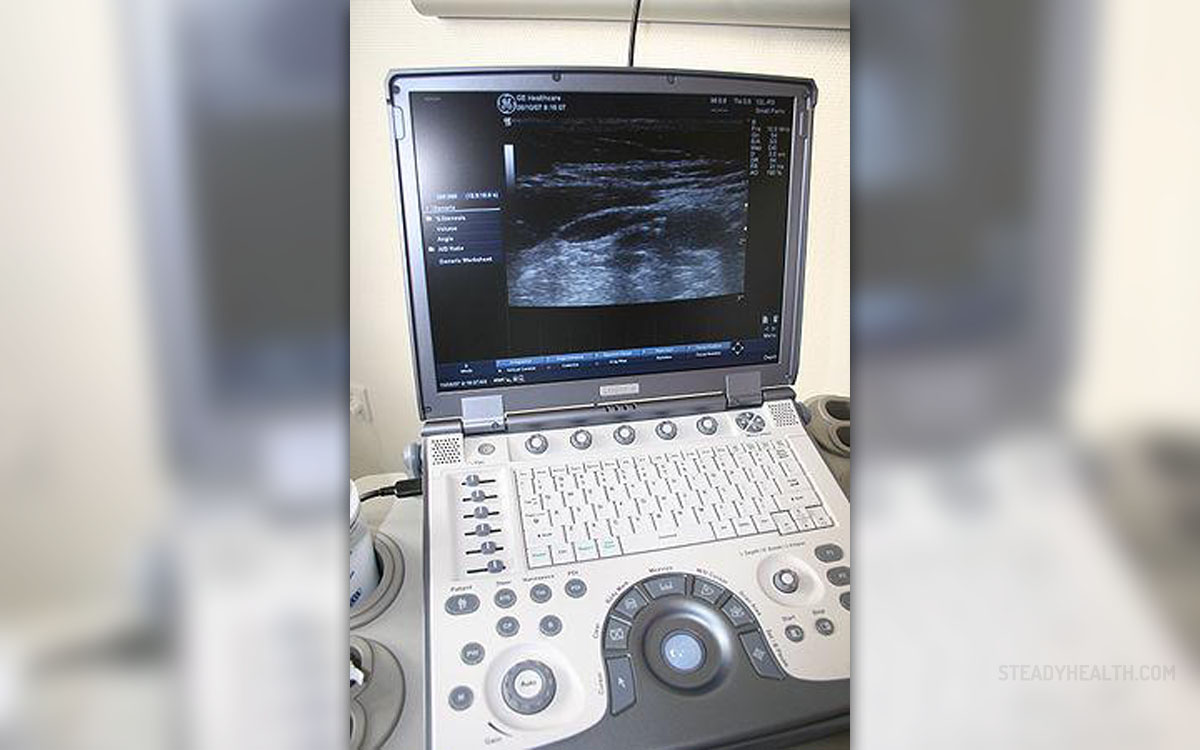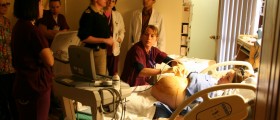
Amniocentesis, also known as amniotic fluid test, is a diagnostic procedure performed during pregnancy. It includes insertion of a needle in the amniotic fluid and taking samples. The fluid and its contents are further examined. This is a powerful diagnostic tool for a variety of chromosomal abnormalities. The test may also confirm the presence of fetal infections and certain birth defects.
Amniocentesis - Test in Pregnancy
Amniocentesis is done between 15th and 20th week of pregnancy. The very procedure is always performed with the assistance of ultrasound. This imaging method provides with all the information regarding the fetal position and allows doctors to opt for the most convenient spot from where the sample will be taken. Ultrasound is also important to prevent complications such as damage to the fetus.
Prior to amniocentesis a pregnant woman is administered an injection of local anesthetic. What follows in insertion of an injection through the mother's abdominal wall and into the uterus and amniotic sac. Approximately 20 mL of amniotic fluid is taken. This amount is sufficient enough for test to be precise and it also does not jeopardize further fetal growth and development. It is normal to feel minor menstrual cramping or slight discomfort in the lower abdomen after the procedure.
After taking samples, fetal cells are separated from the rest of the fluid and are grown in a specific medium. They are fixed and stained and only then become good enough for being examined. Chromosome abnormalities are inspected under the microscope.
In the majority of cases amniocentesis is performed if there are some abnormalities shown on ultrasound. It is also indicated in older women (at least 35 years old), those who have been taking drugs potentially harmful for the fetus as well as mothers that have been exposed to teratogenic viruses.
This test can confirm the presence of genetic abnormalities such as Down syndrome (trisomy 21), Edwards syndrome (trosomy 18) as well as Turner syndrome (monosomy X). As a matter of fact amniocentesis is accurate in 99% of all cases of genetic abnormalities. The test is additionally helpful for early diagnosis of other, not so common, genetic disorders.
Furthermore, apart from inspection of the chromosomes of the fetus, it is also possible to measure the level of alpha-fetoprotein in the amniotic fluid. Changes in the level of this substance may point to the presence of neural tube defects. However, this test is not used for diagnosing other structural birth defects (e.g. heart defects ).
Finally, there are several more reasons why a woman should undergo amniocentesis. The first one is to assess the maturity of the baby's lungs in case there are indications for premature delivery. Secondly, amniocentesis is performed to confirm or exclude uterine infections. And it is also done to check whether there is Rh sensitization and as a means of decompression of polyhydramnios.Risks of Amniocentesis
Due to the fact that amniocentesis is performed relatively early in pregnancy, there is always a chance that baby's limbs will be injured. However, thanks to ultrasound and well experienced doctors this complication almost never occurs.
Miscarriage is another potential complication of amniocentesis. It is estimated that it affects less than 1% of all pregnant women (from 1 out of 200 to 1 out of 400 women). Other potential complications are the already mentioned injury to the baby, infection and sometimes preterm labor. In some cases amniocentesis is responsible for respiratory distress and alloimmunisation of the mother (so called rhesus disease).
According to health experts certain number of women will end up with a miscarriage in the second trimester. This is why we cannot say for sure whether the very procedure is a trigger of termination of the pregnancy or a miscarriage occurs due to other underlying causes.
A woman may choose not to undergo amniocentesis. However, if she does opt not to be tested, she should be aware that some conditions may remain undiagnosed until delivery. Prior to opting for or deciding not to undergo the procedure, each and every pregnant woman must be thoroughly informed about all the benefits and risks of procedure. Only then she may make the final decision.After the Procedure
After amniocentesis, women are due to go home and rest/relax for the rest of the day. It is highly forbidden to participate in any kind of strenuous activity such as exercising, lifting heavy objects/children etc. Sexual activity is also banned. The woman may resume with light every day activities the following day. Discomfort caused by the procedure may be alleviated with acetaminophen. The results are available after 2-3 weeks.
If, however, the woman develops fever, starts to bleed or have vaginal discharge accompanied by severe abdominal pain and more than mild cramps, she is due to contact her health care provider immediately.
All in all, amniocentesis is a very useful, routinely performed procedure allowing doctors to diagnose many conditions early in pregnancy without any serious risks regarding the baby or the mother.

















Your thoughts on this
Loading...